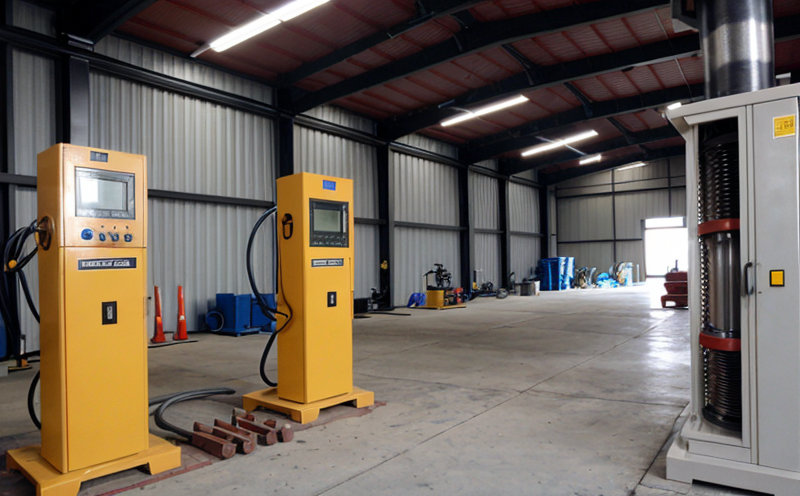ISO 2871-7 Package Creep Resistance Verification
The ISO 2871 series of standards provides a framework for evaluating various physical properties and performance characteristics of packages. One specific test under this suite is the Package Creep Resistance Verification (ISO 2871-7). This testing procedure assesses how packaging materials behave over time when subjected to sustained loads, providing critical insights into their durability and reliability in real-world applications.
The creep resistance of a package is crucial because it determines the package's ability to maintain its structural integrity under prolonged stress. Creep can lead to deformation or failure, especially if the load exceeds the material’s elastic limit. This test helps manufacturers ensure that their packages meet safety standards and perform reliably during transport and storage.
The procedure outlined in ISO 2871-7 involves subjecting a sample of packaging material to an applied load at specified temperature and humidity conditions. The sample is monitored over time, and the amount of deformation or creep is measured. This measurement provides data on the material's resistance to permanent deformation under static loading.
The test setup typically includes a testing machine capable of applying consistent loads in a controlled environment. Specimen preparation involves cutting samples from the packaging material according to predefined dimensions specified by ISO 2871-7. The specimens are then conditioned to the required temperature and humidity before being subjected to the load.
Once the test begins, the specimen is held under load for a predetermined duration, often several days or even weeks, depending on the material's expected lifespan in its intended application. During this period, continuous monitoring ensures accurate measurement of any deformation. Afterward, the extent of creep is calculated based on the initial and final dimensions of the sample.
The results from this test are critical for quality assurance teams and R&D engineers as they provide a clear picture of the material's long-term performance. Compliance officers use these data points to ensure that packaging materials meet regulatory requirements set by agencies like FDA or EMA, which mandate safety and reliability in pharmaceutical packaging, among others.
The process also supports procurement departments by providing reliable information on supplier quality and ensuring that they select materials suitable for the intended applications.
Understanding the creep resistance of a material is essential for industries where packaging integrity must be maintained over extended periods. For instance, in the food industry, packages need to retain their shape and strength during long storage times. Similarly, in logistics and transportation, reliable packaging ensures that products remain undamaged throughout transit.
Industry Applications
| Industry | Description of Application |
|---|---|
| Pharmaceuticals | Ensures that drug packaging maintains its integrity during storage and shipping, protecting the product from damage or degradation. |
| Food & Beverage | Aids in selecting durable materials for containers to prevent leaks and ensure food safety. |
| Logistics & Transportation | Guarantees that packages can withstand the rigors of transport, reducing damage and improving supply chain efficiency. |
| Electronics | Safeguards sensitive electronic components by ensuring packaging maintains its form over time to prevent component shift or damage. |
| Plastics Manufacturing | Supports quality control in the production of plastic packaging, enabling manufacturers to identify materials with optimal creep resistance. |
| Chemicals | Aids in selecting appropriate containers for hazardous chemicals that require stable and durable packaging. |
| Paper & Paperboard | Evaluates the durability of paper-based packages under sustained loads, ensuring they meet industry standards. |
Customer Impact and Satisfaction
The ISO 2871-7 package creep resistance verification service plays a pivotal role in enhancing customer satisfaction by ensuring that packaging materials perform reliably throughout their intended lifecycle. By providing accurate data on the material's ability to resist deformation, this test helps manufacturers create packages that meet both internal quality standards and external regulatory requirements.
For customers who rely on pharmaceutical or food packaging, peace of mind comes from knowing that their products are protected by reliable containers. In industries like electronics and chemicals where sensitive materials require robust protection, the results from ISO 2871-7 tests provide assurance that packages can withstand stress without compromising product integrity.
From a business perspective, this testing ensures compliance with industry standards and regulations, thereby reducing the risk of recalls or legal issues. It also helps in maintaining brand reputation by delivering products packaged in materials that consistently perform as expected.
In addition to these direct benefits, the service fosters long-term relationships between customers and suppliers by ensuring consistent quality across batches. This consistency is crucial for large-scale operations where variations could lead to significant financial losses or reputational damage.
Environmental and Sustainability Contributions
The ISO 2871-7 package creep resistance verification contributes positively to environmental sustainability by promoting the use of materials that are both durable and sustainable. By ensuring that packaging materials can withstand the stresses they encounter without deforming, this test helps reduce waste caused by premature failure or damage.
Manufacturers who adopt materials with excellent creep resistance can design packages that last longer in their intended environments, reducing the need for frequent replacements. This extends the lifecycle of products and reduces resource consumption, which is a key aspect of sustainable practices.
The test also supports circular economy principles by encouraging the use of recyclable or biodegradable materials that remain functional even under prolonged stress. By selecting such materials, companies can contribute to reducing landfill waste and promoting a more sustainable manufacturing process.
Moreover, compliance with ISO 2871-7 standards ensures that packaging contributes minimally to environmental degradation. For instance, in the case of pharmaceutical packaging, ensuring that containers maintain their integrity helps prevent contamination, which is particularly important for hazardous materials or those requiring specific storage conditions.





